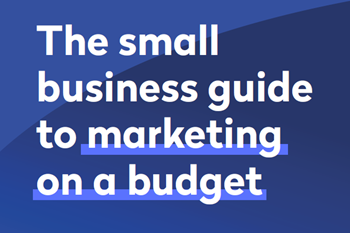21st century society is more closely linked to technology than any generation before it. Not only that but the pervasiveness of technology in our day-to-day lives is only set to grow as technology advances.
Devices like smartphones, tablets and laptops are commonplace all over the world. Through these devices, users watch on average five billion videos on YouTube every day. When social media is added to the mix, this figure skyrockets.
The advantages of video translation in a globalized world
Market research has shown that as many as 92% of mobile viewers share videos with others. Statistics further suggest that a video on social media generates 12 times the number of shares as text and images combined.
With such consistently high traffic, video and audio media offer obvious marketing opportunities for businesses willing to embrace these growing platforms. Some research goes as far as to suggest that marketers who use video experience revenue growth at rates 49% faster than those who don’t.
However, in order to find a video amusing or engaging, a viewer must first be able to understand the content that they are being shown. Video and audio translation allow video marketing to extend beyond the inevitable language barriers that occur in our increasingly interconnected and globalized society. This in turn will allow a business to expand its media presence beyond borders: facilitating multilingual marketing and improving the international market penetration of that business.
How does video translation work?
Whether translating a video or audio, the first step of any translation is to transcribe the source material in its original language. This initial transcription provides the basis for translating the content of the video or audio file into the desired language or languages (and, as such, the quality of transcription is extremely important).
From here, by making use of effective timestamping, you can use translated subtitles or a voiceover in the desired language that is perfectly in sync with the original video. Depending on your needs, you can obtain the translations in a variety of formats.
In the case of video, the two most common formats of translation focus on subtitles. A translator can synchronize and embed these subtitles directly into a copy of the original video file or provide them via a separate, timestamped, translated caption file that you can sync with the original video whenever desired.
In order to keep pace with the flow of the original material, a professional video translation may offer a slightly abbreviated form of subtitles to reflect what is said in the original video. This is by design in order to prevent a subtitle backlog, ensuring that a viewer is able to read the translated subtitles while still following the progression of the original video.
Similarly, you can also transcribe an audio file into various formats, dependent on your needs. Some audio translations may take the form of a simple voiceover translation: the original material is translated into an audio file of the desired language. Other audio file translations, meanwhile, may include transcription services. In these instances, the resulting translation is delivered as a written document.
Regardless of the translation format or whether the translation is of video or audio, using professional translation and transcription services will ensure that the true meaning of the content is preserved, while the appropriate translated captions continue to flow with the pace of the original content.
How to use video and audio translation in your marketing strategy
Alongside the obvious advantages of facilitating multilingual and international marketing, the video translation process also has the potential to benefit your company in a number of other ways.
From translated audio instruction manuals and translated advertising to video e-learning resources, these translations can help improve productivity and supplement staff training. If the phrase “a picture tells a thousand words” is anything to go by, it should come as no surprise that research shows video and audio media is more engaging than the written word. Additionally, information from video and audio sources is retained better on average than information that is read – our minds are geared towards taking in visual and aural stimulation.
Audio and video translations also have the benefit of assisting training and staff education in situations where language barriers may otherwise limit the effectiveness of communication. This can be a key factor in supporting businesses to increase their productivity and get the best out of global teams.
With the business benefits of audio and video media so obvious, there’s no reason not to embrace the potential of technology and reap the rewards that come with it. Video and audio translations allow this immense potential to go even further: beyond language barriers and beyond borders.
Access the latest business knowledge in Marketing
Get Access



![The State of Marketing: Insights for 2018 [Infographic]](/getmedia/81c7ac13-71e7-489b-afaf-35b449c06d55/the-state-of-marketing-insights-for-2018.jpg?maxsidesize=350&resizemode=force)




Comments
Join the conversation...